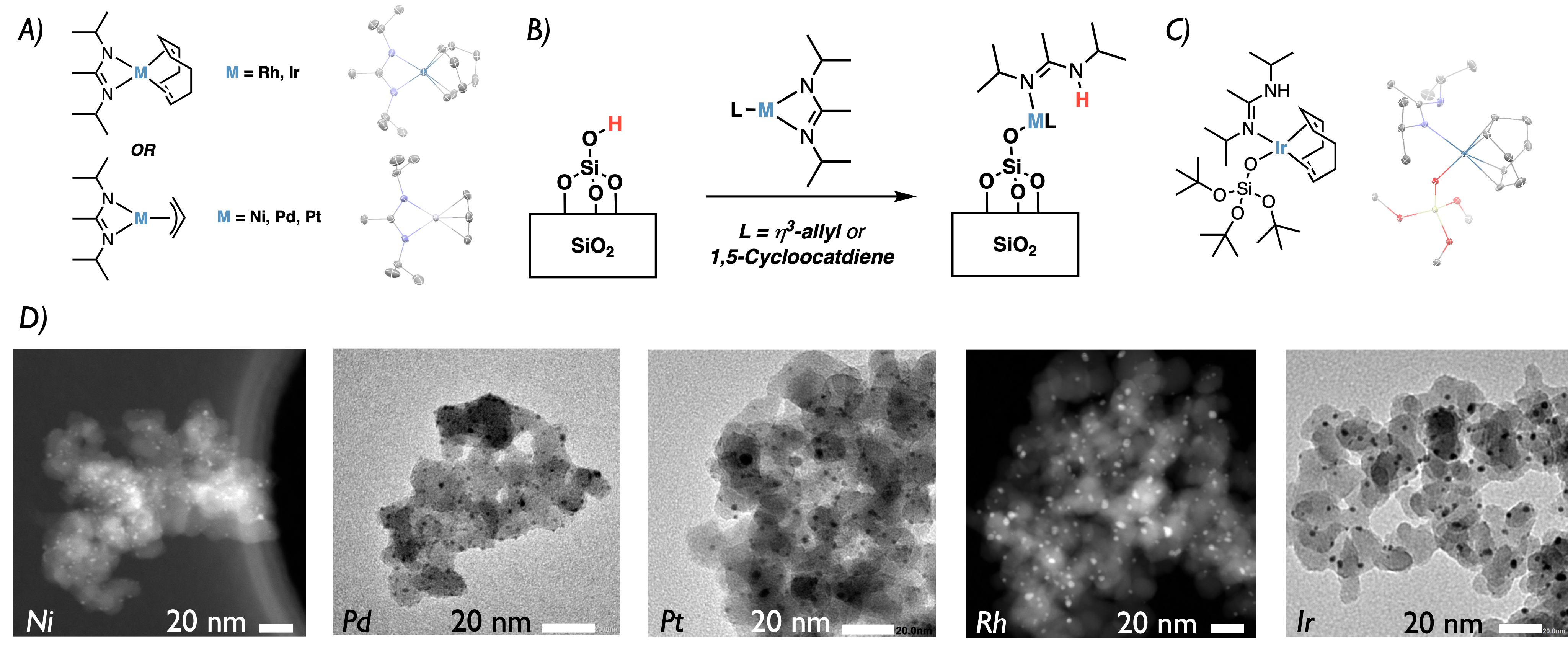Metal Amidinate Precursors for Easy Access to Supported Nanoparticles
Platinum group metals (PGM) are of central importance in a variety of industrially relevant processes.[1] In most cases, the active phase is the metallic state, for instance in the form of colloidal nanoparticles, supported nanoparticles or thin films on a surface.[2]In order to establish meaningful structure activity relationships, a large research effort has concentrated over the years on the development of tailored organometallic or metalorganic precursors, that can be used for precise material synthesis, such as Atomic Layer Deposition (ALD) or Surface organometallic chemistry (SOMC).[3,4] Both of these methods require precursors that are stable during storage, yet reactive towards a specific surface functionality in a selective way, leaving no byproduct upon thermal/gas treatment. The combination of these requirements is challenging to be met by one single precursor family, especially for late 4d and 5d transition metals.[5]
We have explored the use of amidinate ligands for SOMC, which are a popular class of ligands in ALD applications. In this work, a scalable synthesis route for a series of amidinate-based organometallic precursors based on platinum group metals (Rh, Ir, Pd, Pt) as well as Ni was developed (A). These precursors readily react with oxide supports such SiO2 in a well-defined way (B), as confirmed by the synthesis of a molecular analogue of the surface species (C). Upon treatment with hydrogen, they are converted into supported small and narrowly distributed nanoparticles in a traceless fashion, as confirmed by IR, TPR–TCD and TEM techniques (D).

[2] L. Liu, A. Corma, Chem. Rev. 2018, 118, 4981–5079.
[3] C. Copéret, Acc. Chem. Res. 2019, 52, 1697–1708.
[4] D. J. Hagen, M. E. Pemble, M. Karppinen, Appl. Phys. Rev. 2019, 6, 041309.
[5] C. Copéret, A. Comas-Vives, M. P. Conley, D. P. Estes, A. Fedorov, V. Mougel, H. Nagae, F. Núñez-Zarur, P. A. Zhizhko, Chem. Rev. 2016, 116, 323–421.